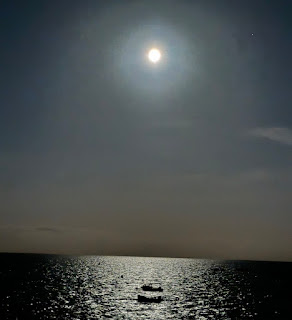Free Speech on the Internet: The Crisis of Epistemic Authority Daedalus
|
J5 targets cryptocurrency during Cyber Challenge |
|
Last week, some of the best cybercrime investigators and
analysts from around the world gathered in Brisbane for the Joint Chiefs of
Global Tax Enforcement’s (J5) annual J5 Cyber Challenge. They reviewed data and
identified quality leads focussing on cryptocurrency themes. |
The World’s Top Futurist Predicts We’re 10 Years from Immortality. Are You Ready to Live Forever?
Berlin is sceptical of EU migration policy, but warms to Europe-wide Albania model Euractiv
Meta Platforms and YouTube ban RT worldwideWSWS
RT editor-in-chief proclaimed ‘expert troller’ RT “Key line – ‘Christiane Amanpour interviewed her ex-husband about our perfidy and called me an ‘expert troller’.’”
Scenes From The Literary Blacklist Persuasion
The PhD Paradox: A Journey into Academia’s Upside-Down World Daniel Lemire
We or They? Crooked Timber
Opinion | Boom! The king of breaking sports media news breaks news of his own
NBA insider Adrian Wojnarowski dropped his biggest Woj Bomb yet: He is stepping away from his $7 million salary and high-profile gig at ESPN.
Opinion | What’s next for Kamala Harris and meeting the press?
Don’t be surprised if she focuses on giving interviews to local news about regional issues instead of talking big-picture issues with major networks
Opinion | Hey, Elon Musk, assassination jokes aren’t funny
Especially when the nation is completely on edge and the people you tweeted about are already facing death threats.
Opinion | Blaming media, JD Vance continues to push silly yet dangerous conspiracy theory about pets
Appearing on multiple news shows over the weekend, Trump’s running mate doubled down on the baseless claim that pets are being eaten in Ohio
Scientists Say They Have Created the First Electromagnetic Vortex Cannon.
Vortices are a fairly common phenomenon of nature. They happen when a jet of something creates frictional forces that cause the sides of the surrounding material—whether a gas or liquid—to slow down and curl inward, forming a ring. The propulsive action of jellyfish and squid, for example, can create these types of vortices (and the popular children’s toy known as the “Airzooka” achieves a similar phenomenon).
For nearly 30 years, scientists have theorized that such a vortex should be possible within the realm of electromagnetism. In 1996, R.W. Hellwarth and P. Nouchi theorized that “focused doughnuts” of electromagnetic radiation could be propagated through free space, but had no idea how to trigger such a phenomenon.
Now, scientists from the University of Electronic Science and Technology of China, the Nanyang Technological University in Singapore, and the University of Southampton in the U.K. think they’ve solved the riddle. According to a study published last month in the journal Applied Physics Reviews, the team has designed a radially polarized conical horn antenna, otherwise known as an “electromagnetic cannon.”
…
So, why make an electromagnetic vortex cannon?
To shoot stuff out of it and see how far it will go.

